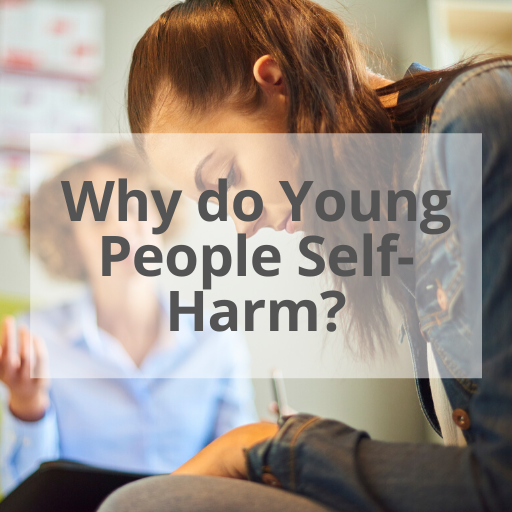28th Feb 2020
Why Do Young People Self-Harm?

The stigma attached to self-harm means that society has a limited understanding of what it is and why people do it.
For many young people, it often serves a function, such as to regulate emotions or to communicate their distress. Andrew Sutton, our Clinical Nurse Specialist, shares the three key functions of self-harm for children and young people.
To Regulate
Self-harm is usually linked to an individual feeling overwhelming emotional pain, which they may find difficult to convey verbally. To cope with this pain, they may turn to harming themselves in order to alleviate their internal pain.
Our brains are still forming well into our twenties, which means understanding the world and processing emotions can be limited. Coupled with the difficulty of being a young person these days, this can make for a very turbulent time. There are many barriers for young people when it comes to communicating their internal distress, such as; shame, fear or low self-esteem.
Furthermore, everyone has an emotional baseline, meaning we all have a different distress tolerance. Some young people have a higher threshold to distress and may be less vulnerable to anxiety throughout adolescence. However, others may have a lower threshold, which coupled with trauma or further internal distress, may lead a young person to utilise self-harm as a coping method.
Most cases of self-harm are not carried out with intent to end life, with the purpose often to inflict physical pain on oneself in order to regulate emotions. When it is done with this purpose in mind, it is usually kept private and may not be visible or obvious to other people.

To Communicate
For some young people, self-harm may be used to communicate their distress to others. This may be viewed as attention-seeking; however, it is usually done to ensure that their needs are being met by their caregivers.
This type of self-harm can be impacted by attachment difficulties, for example, if a young person lacks trust in their caregiver’s ability to keep them safe. For those using self-harm in this way, they may have experienced neglect or have difficulty trusting others due to rejection.
How a caregiver responds to an incident of self-harm in this case can be pivotal to their perception of self-harm going forward. If a young person learns that self-harm can be a valuable tool in receiving attention, this may manifest as a care eliciting behaviour. Whilst ‘attention-seeking’ has very particular connotations attached to it, these incidents can be very dangerous. Care eliciting self-harm can become risky if the young person feels that they need to increase intensity to ensure their needs are being met.
If an adult is to respond through their anxiety and perhaps become overly protective, this may exacerbate the behaviour. Instead, helping a young person to develop trust and accept responsibility for their own actions is key in encouraging a healthy recovery.

To Join In
For a small group of individuals, self-harm may be partly influenced by the world around us. As we develop and explore our identity, young people can be easily influenced by those around them, and the act of harming oneself is becoming increasingly common.
Self-harm is done in a myriad of different ways for an infinite amount of reasons, with some not fitting neatly into any one of these boxes. It is something that must always be taken seriously and treated appropriately to ensure that the individual can learn new ways of functioning without harming themselves.

